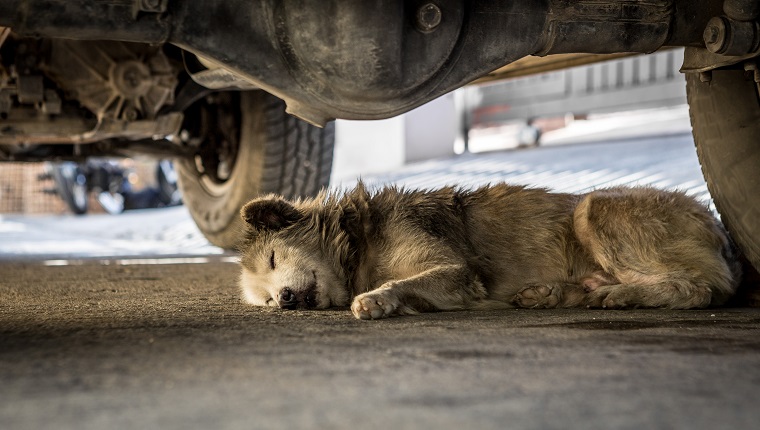Carbon monoxide poisoning in dogs happens when a dog inhales the odorless gas, which in turn is absorbed by the bloodstream and prevents blood from successfully providing oxygen to the heart and the brain.
Poisoning can come about from a number of sources including car exhaust fumes, propane heaters and fireplaces. If a dog inhales enough carbon monoxide, it can be fatal.
If you see signs that your dog might be suffering from carbon monoxide exposure or poisoning, then you must consult your veterinarian immediately for a proper diagnosis and course of treatment. Here’s what you should know about the symptoms, causes, and treatments of carbon monoxide poisoning in dogs.
Symptoms Of Carbon Monoxide Poisoning In Dogs
Carbon monoxide poisoning in dogs can result in a range of symptoms. Some of the most common symptoms include:
- Seeming weak or lethargic
- Lips, gums, and ears turning red
- Coughing
- Problems breathing
- Showing symptoms similar to flu
- Vomiting
- Shying away from exercising
- Problems sleeping
- Seizures
- Coma
Causes Of Carbon Monoxide Poisoning In Dogs

The cause of carbon monoxide poisoning in dogs is a dog inhaling too much of the odorless gas carbon monoxide. Some of the most common circumstances that may lead to a dog inhaling carbon monoxide include:
- Being inside a garage with a car running
- Gas water heaters and fireplaces
- Fires
- Furnaces that aren’t ventilated
- Kerosene and propane heaters
Veterinary Treatments
If you notice that your dog has experienced carbon monoxide exposure, then you must consult your veterinarian straight away. In many cases, this is a life-threatening emergency.
When it comes to treatment, your veterinarian will first of all attempt to use oxygen therapy to normalize your dog’s oxygen levels and remove any carbon monoxide from the bloodstream.
They’ll also take blood tests to analyze the level of potential poisoning. In some cases, vets may use an ECG to monitor a dog’s heart, and the dog could also need fluid therapy.
When recovering at home, it is important to limit your dog’s exercise and levels of activity for at least the first month. Consult your veterinarian during the recovery process to make sure that there aren’t any lingering symptoms or potential complications.
In general, it’s advisable to always make use of carbon monoxide detectors at home to keep your dog — and your family — safe.
Has your dog ever suffered from carbon monoxide poisoning? How did your vet help them recover? Tell us all about it in the comments below.









